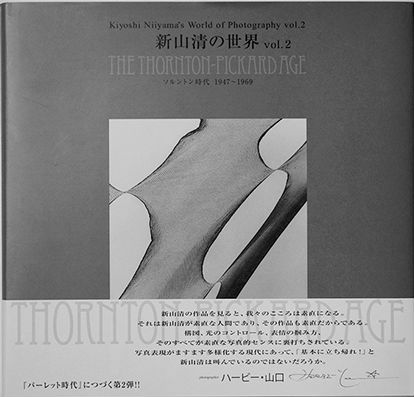

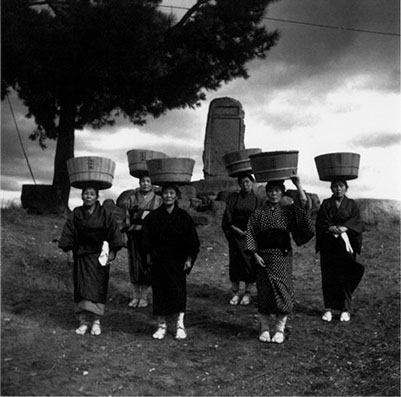
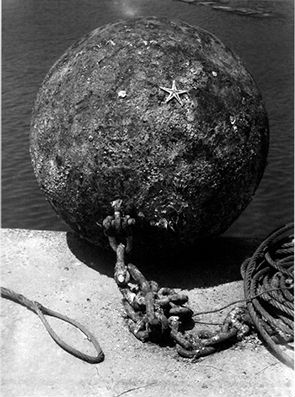

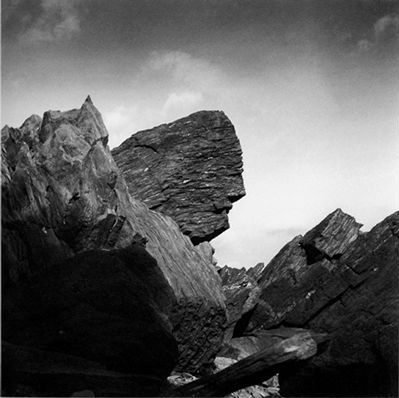
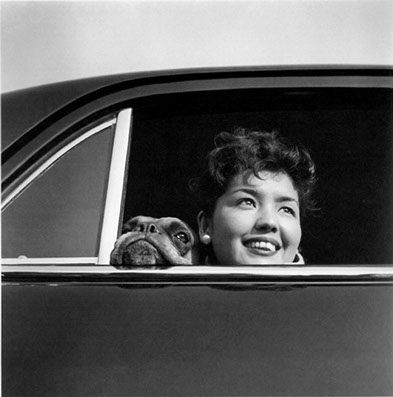



Kiyoshi Niiyama's World of Photography vol.2
THE THORNTON-PICKARD AGE 1947~1969
Miyajima, Hiroshima
Otatasan(fish dealing ladies)
Buoy
Takahama cho, Matsuyama city,Ehimi Prefecture
Rock, Misaki Peninsula, Ehime Prefecture
Model and bull-dog
Sleeping rabbit
Lotus
Big tree
|<<
>>|
1 - 10
<
>
Kiyoshi Niiyama’s World of Photography vol.2
THE THORNTON-PICKARD AGE 1945–1969
FOREWORD
In November 2008, I published a collection of photographs by my father Kiyoshi Niiyama on the theme of "The Pearlette Age". I received valuable comments and words of encouragement from many people, and I would like to take this opportunity to express my deep gratitude.
The year 2011 will mark the 100th anniversary of the birth of Kiyoshi Niiyama, also corresponding to the forty-third year since his death. Once again, I find myself filled with precious memories and profound nostalgia when thinking of how swiftly so many years have passed by.
When taking a look at the career of Kiyoshi Niiyama as a photographer who continued to take photographs recording the dark and bright sides of his times, it can be divided into the following stages:
1 ) The Pearlette Age
Pre-war years 1937~1945
During this period, he used Pearlette cameras for taking his photographs. He also published his works at the Pearlette D
2 ) The Pearlette & Thornton-Pickard Age in His Homeland Shikoku
1945~1952
In 1945, after the Second World War came to an end, the Rikagaku Kenkyusho (RIKEN) where he had been working was dissolved and Kiyoshi Niiyama returned to his homeland Ehime Prefecture in Shikoku. At first, he lived in Yawatahama, where he had encounters with photo enthusiasts and engaged in giving them photographic training. He later moved to Matsuyama, his hometown, where he enjoyed giving instructions to photo aficionados and going on shooting trips to all parts of Shikoku. Such a lifestyle of semi-retirement spent at his leisure continued until 1952.
3 ) The Thornton-Pickard Age
1952~1958
In 1952, when Tokyo had more or less overcome the post-war confusion and was gradually making its recovery, Kiyoshi Niiyama was finally able to realize his long-awaited return to Tokyo inspired partly by suggestions made by photographer Soichi Kiyooka, who was not only a fellow member of the Pearlette Camera Coterie but also one of his closest friends. Until 1958, he took photographs while serving as advisor to a camera manufacturer, writing articles for photo magazines and also giving guidance to amateur photographers.
4 ) The Pentax Age
1958~1969
In 1958, upon the recommendation of Mr. Hachiro Suzuki, a former chief editor of a magazine whom Kiyoshi Niiyama had always respected, he joined Asahi Optical Co., Ltd. (currently Pentax Corporation). He successively assumed the posts of Director of the Tokyo Service Center, Advertising Manager, and Chief of the Secretariat for the PentaxWorld Photo Contests. During this period, he remained a Sunday photographer only using his days off to take photographs and also devoted himself to teaching amateur photographers in the evenings.
In 1969, he died a sudden death at the age of fifty-seven.
The Second World War, Japan's defeat and recovery from a state of confusion ム such aspects of one of the most turbulent times in the history of Showa (Showa Period: 1926~1989) have been recorded through the eyes of Kiyoshi Niiyama in the medium called photography.
He had been so eagerly looking forward to a new life indulging in photography after his retirement at the age of sixty. Preparing himself for the new life awaiting him, he took advantage of a long weekend and went on a photographing tour all over Taiwan, guided by two Taiwanese men, lasting ten days until just a week before his death. The photographs that he took during this journey are brimming with energy, and his contact sheets show how excited he had been, fully enjoying taking photographs there.
"The Thornton-Pickard Age" that I am publishing on this occasion is a collection of my father's works taken mostly during part of Stage 2 and Stage 3 as mentioned above.
Shooting with the British-made single-lens-reflex Thornton-Pickard camera which he procured after the war enabled him to produce works that had not been possible with the pre-war Pearlette camera with a single meniscus lens. A man who had always loved photographs, my father no doubt must have been extremely enthusiastic in pursuit of works of superior quality. Yet, I am sure that heen extremely enthusiastic in pursuit of works of superior quality. Yet, I am sure that he was able to leave behind such fine works owing to the generous support he received through his encounters with various people at a time when photographic materials such as film and printing paper were very costly, and I would like to take this opportunity to express my gratitude to all the people concerned for their kind generosity.
For this collection of photographs, I decided on the title "The Thornton-Pickard Age" mainly because I have memories of my father always walking around taking photographs while carrying the heavy Thornton-Pickard camera with him. Although he had other cameras such as ROLLEICORD, AIRESFLEX, Ricohflex, etc., I have consciously selected the Thornton-Pickard camera to be highlighted in the title "The Thornton-Pickard Age".
When taking his photographs, he took plenty of time so as to avoid any losses, and he would always control his state of mind before shooting, attempt to converse with the scenes and landscapes, and then finally take his photographs. Such was Kiyoshi Niiyama's style of photography. His works are the products of the warm gaze with which he constantly faced his subjects. The fact that he had worked as an optical engineer before the war and the photographic skills that he had acquired during his amateur days led to his reputation of being a very strict instructor especially at times when he was shown photographs lacking sharpness and poor prints. At the same time, I believe that it was because of his uncompromising stance that my father was able to win over the sympathy of so many people.
Although Kiyoshi Niiyama himself appeared to be extremely satisfied with his works produced during this period, he did not go out of his way to publish them in photo journals, and these works remained carefully stored in his own files. Personally, I am especially fond of my father's works belonging to this period. I even feel a little jealous at how he had been able to enjoy spending his time with a rich spirit, even though he lived in an age that was not materially affluent. I very much hope that these works by my father will provide you with some moments of delight.
Lastly, I would like to take this opportunity to express my profound gratitude to the two photographers Mr. Norihiko Matsumoto and Mr. Herbie Yamaguchi, historian of Japanese cameras Mr. Takeshi Hagiya, art director Kazunori Kohno, photo printer Mr. Norihisa Kato, Ms. Romi Sakiyama who translated the texts into English, Mr. Kimio Mizuki in charge of binding and design, and to all those who extended their generous cooperation, support and assistance upon the publication of this book.
Yoichi Niiyama
Size: 240x250mm / Pages: 132 / Hard Cover / Price: Yen 3,600+tax
Published on Nov. 25, 2010. / Publisher: COSMOS INTERNATIONAL INC.
©
Studio Ray since 2008